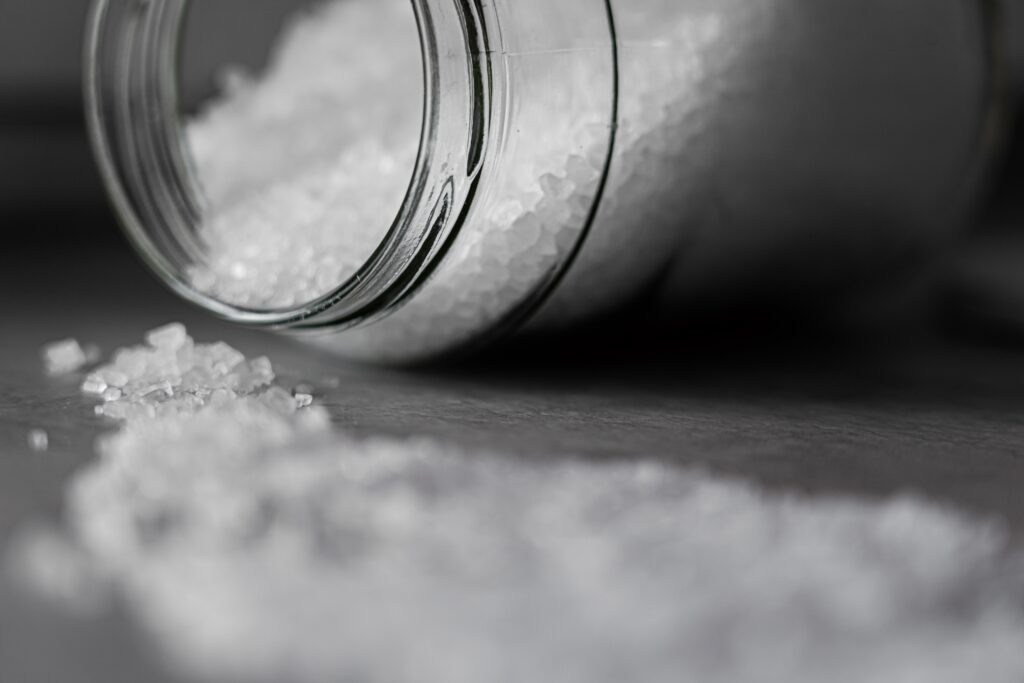Do you know what types of salt are used in cooking? Salt, also called sodium chloride, is one of the five basic tastes felt by humans. It can radically change the taste, add flavor and neutralize sweetness.
The tradition of salting food was already widespread by the Egyptians around 4,000 years BC.
From Latin, salarium means “a portion of salt,” as the Romans used salt as a bargaining chip for purchasing and selling goods. Even today, one of the main accesses to Rome is called “Via Salaria,” a route that the salt traveled to the Roman Empire.
Discover the main types of salt that can be used in your kitchen.
There must be something strangely sacred in salt. It is in our tears and in the sea.
-Khalil Gibran
Jump To Section
Salt Exploration
You can also watch this and other exclusive GA Originals on YouTube.
In the early 20th century, salt began to be used in the chemical and textile industries and, later, in the metallurgical, food, agricultural, and livestock industries, among others.
There are two ways of obtaining table salt, through deposits that are mined, a technique that is primarily used in the United States and Europe, or by evaporation and crystallization of seawater made in tropical countries such as Brazil.
Seawater is a natural resource with several types of dissolved salts, including sodium chloride. On average, there are 35 grams of sodium chloride for every liter of seawater.
When removed from the sea, the seawater goes to giant evaporation tanks, and because of the winds, solar radiation, and high temperatures, it begins to form brine. Then the salt crystallizes and is separated.
Coarse Salt

For coarse salt production, the salt continues to dry under the sun until all the sodium chloride has clumped together and forms salty crystal stones up to 3 centimeters in diameter.
Refined Salt
In the production of refined salt, the brine is processed before the formation of crystals, passing through filters to eliminate impurities. Later, it continues to evaporate in vacuum chambers until it generates tiny crystals that will be consumed daily.
Maldon Salt
Maldon salt is very popular in haute cuisine to give a special and visual flavor to dishes, thanks to its brittle appearance. Being easily dissolved when ingested, its gastronomic use can give the finishing touch to salads or grilled meats. Produced in Essex in England, it has a pure taste of the sea.
Flor De Sal
Coming from France, Flor de Sal literally translates as ‘flower of salt”, it needs a lot of sun, gentle breeze, and low humidity to produce. Its crystals are collected manually and dried naturally in the sun before bottling. Much appreciated in culinary, Flor de Sal should be added to recipes after cooking so that its crunchy texture is not lost.
Pink Salt

Himalayan pink salt is a mixture of several minerals and can be used as an alternative to table salt. Its pink color comes from iron oxide and manganese in its composition. Originating from the sea fossilized thousands of years ago in the Himalayan region, it does not undergo chemical processes and contains about 80 minerals that can benefit our bodies.
Black Salt
Indian black salt, or Kala Namak, is an ancient herbal salt produced in India and Pakistan. It is made by combining Himalayan Salt and herbs, and fruits from the region, giving its smoky and slightly sulfuric flavor.
Light Salt
Light salt is considered an option for hypertensive people, as it has only 50% sodium chloride. The other 50% is potassium chloride.
Its flavor is smoother, in addition to helping with physical well-being, as it reduces water retention in the body due to the concentration of potassium chloride.
Did you like this article?
I hope this article has helped you understand about the types of salt for cooking. To learn more, take a look at Is It Safe To Wash Meat Before Cooking?
Leave a comment below and share our content.
Help our community grow by following our social media on Spotify, Instagram, Facebook, Youtube, and Tiktok. And stay up to date with the news from the world of Gastronomy.
Don’t forget to tag @gastrovinoacademy on Instagram and hashtag it #gastrovinoacademy.
Cheers 🍷


